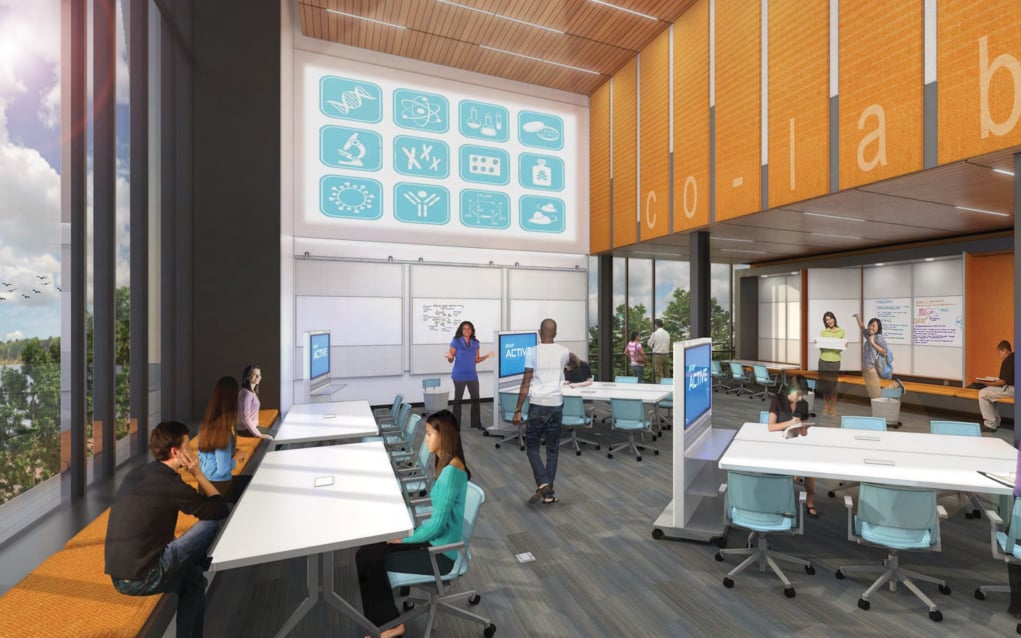Hands-on Learning is More Effective
Hermann Miller conducted a study with the National Training Laboratories and found that lectures are 5% effective for teaching college students, while “Practice by Doing” is 75% effective. More and more, colleges and universities are moving to “hands-on” learning, in particular when it comes to technical skills. “Learn by telling” has proven less effective than “learn by doing.” And spaces have to be adapted to reflect that.
“I never teach my pupils. I only attempt to provide the conditions in which they can learn.” – Albert Einstein
Space Design Needs to Allow For Access and Flexibility
Hands-on learning spaces require instructors and students to work together—and move throughout the space. They often require collaboration on projects as well. This means the spaces need to be configurable and easily shifted from group learning and collaboration to centralized demonstration and discussion, to test taking, and back again. Work areas are often larger and modular, requiring more space for movement and configuration. Technology such as LED screens and whiteboards at workstations are useful in this environment (vs. one screen or whiteboard at the front of the lecture hall.)
Power Needs and Locations Must Shift
Hands on learning more often than not includes a computer or tablet. With a modular workspace, power requirements need to be rethought. Gone are the “outlets along the walls” mentality. Innovative solutions can provide power from a dropdown cord from the ceiling or a pop-up module attached to the workstation. Ensuring connectivity is crucial to learning success. As higher learning spaces are built and adapted for hands-on and technical learning, it’s more critical than ever to have a design team that thinks critically about how the space will be used and brings fresh ideas to the design. On top of the challenges a hands-on space presents, there are still the common considerations of natural light, ergonomic functionality, storage requirements, and more. But with the right innovation, your campus—and students, faculty, and staff—can be set up for success as the shift toward technical training continues.






